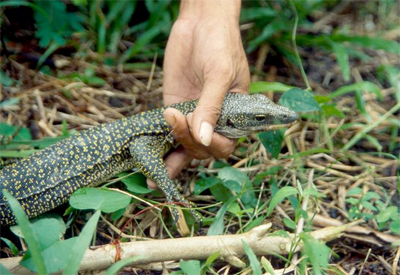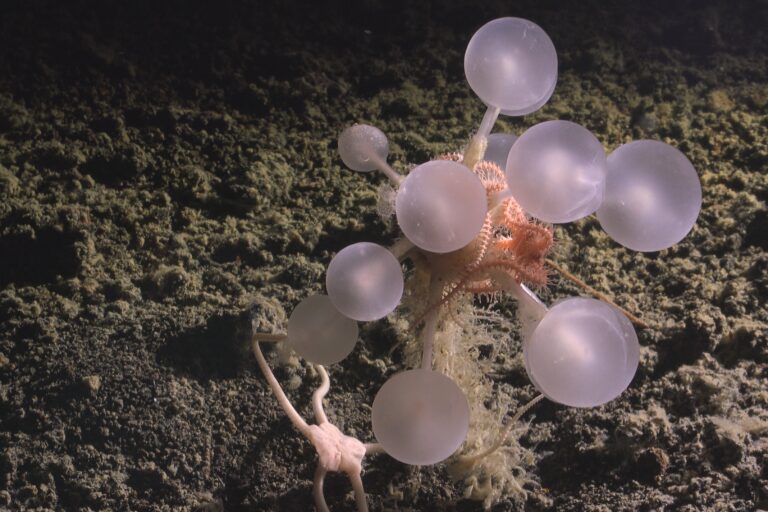German researchers have discovered a new species of monitor lizard in Indonesia using DNA analysis and morphological characteristics. The species, Varanus lirungensis, is described in the Australian Journal of Zoology.
Varanus lirungensis inhabits the Talaud Islands, an archipelago between the Indonesian island of Sulawesi and Mindanao in the Philippines. Its latin name refers to the small village of Lirung on Salibabu Island where the new species was first located. Salibabu is the second largest island of the Talaud group.
Researchers say the discovery is important because it highlights the high, but poorly known, diversity of monitor lizards in Indonesia. Several species of water monitors have been discovered on Sulawesi and surrounding islands in recent years.
 Varanus lirungensis. Photo by André Koch.
|
But the discoveries come as a mixed blessing for the species. On one hand, researchers can ask authorities to protect the species from trade. On the other, reptile collectors are always on the lookout for previously unknown species. When scientists report discoveries, reptiles hunters are not long to follow, poaching specimen from the wild.
“As monitor lizards are exploited for the international trade in live animals and reptile leather, small island populations could soon be eliminated” said Wolfgang Wägele, Director of the Zoological Research Museum Alexander Koenig (ZFMK) in Bonn.
“The taxonomic revision of Indonesia’s monitor lizards is urgently required to determine and adjust the official export quotas and define the conservation status of single island populations,” added Thomas Ziegler, study co-author and head of the aquarium at the Cologne Zoo.
Monitors are a family of carnivorous lizards found throughout Asia, Australia, and Africa. The group includes the Komodo dragon, the world’s heaviest lizard, and the crocodile monitor, the longest lizard.
Koch A., Arida E., Schmitz A., Böhme W. & Ziegler T. 2009. Refining the polytypic species concept of mangrove monitors (Squamata: Varanus indicus group): a new cryptic species from the Talaud Islands, Indonesia, reveals the underestimated diversity of Indo-Australian monitor lizards. Australian Journal of Zoology, 57(1): 29-40. http://www.publish.csiro.au/nid/90/paper/ZO08072.htm
Related articles
Global warming causes sheep to shrink
(07/02/2009) Climate change is shrinking Scotland’s wild Soay sheep despite the evolutionary advantages of having a large body, report researchers writing in the journal Science. The results suggest that the decrease is primarily an ecological response to environmental variation over the last 25 years, rather than evolutionary change.
Extinction, like climate change, is complicated

(03/26/2007) Extinction is a hotly debated, but poorly understood topic in science. The same goes for climate change. When scientists try to forecast the impact of global change on future biodiversity levels, the results are contentious, to say the least. While some argue that species have managed to survive worse climate change in the past and that current threats to biodiversity are overstated, many biologists say the impacts of climate change and resulting shifts in rainfall, temperature, sea levels, ecosystem composition, and food availability will have significant effects on global species richness.















